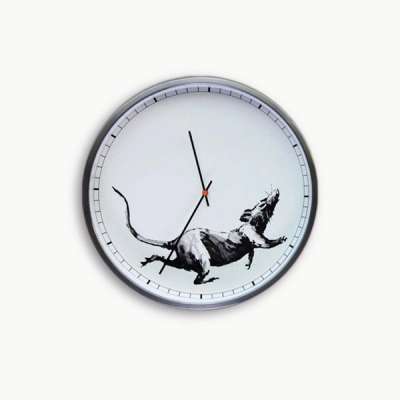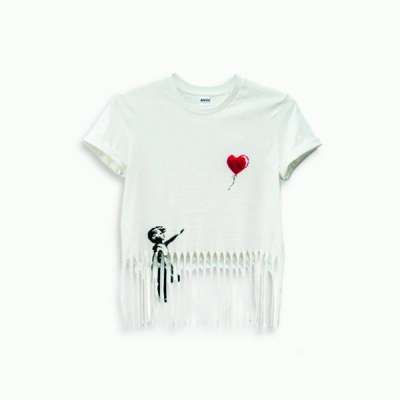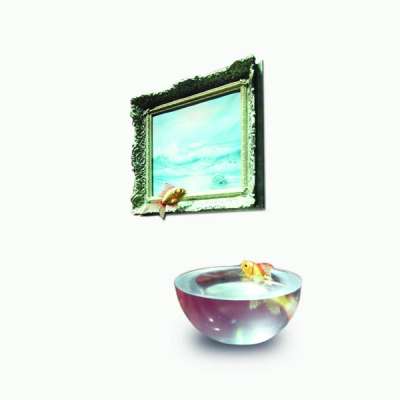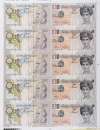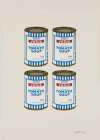Gross
Domestic Product
Endeavouring to make his work more accessible, Banksy masterminded an online pop-up shop like no other: Gross Domestic Product (2019). The works on sale were available at impressively low price points, but only to entrants entering a random draw by answering the loaded question, "Why does art matter?"
Banksy Gross Domestic Product For sale
Gross Domestic Product Value (5 Years)
Works from the Gross Domestic Product series by Banksy have a strong market value presence, with 50 auction appearances. Top performing works have achieved standout auction results, with peak hammer prices of £75000. Over the past 12 months, average values across the series have ranged from £4826 to £35000. The series shows an average annual growth rate of 62.93%.
Gross Domestic Product Market value
Auction Results
| Artwork | Auction Date | Auction House | Return to Seller | Hammer Price | Buyer Paid |
|---|---|---|---|---|---|
 Banksy™ Met ball Banksy Mixed Media | 7 Mar 2025 | Phillips London | £25,500 | £30,000 | £45,000 |
 Banksy™ Welcome Mat Banksy Mixed Media | 28 May 2024 | Carlo Bonte Auction | £1,743 | £2,050 | £2,600 |
 Banksy™ Duck & Cover Banksy Mixed Media | 15 Mar 2023 | Christie's London | £51,000 | £60,000 | £80,000 |
 Banksy™ Cushions Banksy Mixed Media | 13 Jul 2022 | Tate Ward Auctions | £8,925 | £10,500 | £14,000 |
 Banksy™ Balloon Tee Banksy Mixed Media | 13 Jul 2022 | Tate Ward Auctions | £5,525 | £6,500 | £9,000 |
 Banksy™ Mug Banksy Mixed Media | 26 May 2021 | Tate Ward Auctions | £3,400 | £4,000 | £5,500 |
 Banksy™ Black Banksy Mixed Media | 24 Mar 2021 | Tate Ward Auctions | £12,750 | £15,000 | £20,000 |
Sell Your Art
with Us
with Us
Join Our Network of Collectors. Buy, Sell and Track Demand
Meaning & Analysis
Banksy’s 2019 project, a pop-up storefront and companion online shop titled Gross Domestic Product, is the artist at his most compelling. Appearing overnight in Croydon, South London, the shop windows were filled with dystopian, tongue-in-cheek artworks that could only have been made by one man.
As queues of fans formed around the block, it soon became clear that this was not a shop at all but merely a showcase for the artist’s work. The real shop was online, ironically titled: ‘Gross Domestic Product™… where art irritates life’, and it wasn’t a traditional shop at all.
Rather than adopting a retail model of first come first served, Banksy decided to make his potential customers answer a question before they could own one of his artworks/products. This, according to the website’s text, would help keep out those who were just buying for investment, along with a polite notice which read, ‘Please refrain from registering at this time if you are a wealthy art collector.’
The (age-old) question to be answered was “Why does art matter?” and the answers were judged by comedian Adam Bloom for their humour, originality and sincerity. Once past this barrier, your name would be entered into a lottery to receive the piece you wanted to buy.
The shop appeared a year after the famous shredding stunt at Sotheby’s London when, as the hammer came down on one of the best-known Banksy prints - Girl With Balloon - a self-destruct device was activated and the painting appeared to fall from its frame only to be shredded as the audience looked on in horror and amusement. The artist later made a video revealing how he had installed a shredding device into the work “in case it was ever put up for auction.” Gross Domestic Product seemed to be a natural consequence of this stunt, ensuring that Banksy could take ownership of primary sales of his work and enabling him to sell ‘merchandise’ (i.e his sculptures and prints here) for as little as £10 in a bid to make his art accessible to a wider audience.
It was also reported that GDP may have also come about as a result of a greeting card company’s attempt to trademark Banksy’s name in order to sell merchandise featuring his work. With the establishment of GDP – whose products feature the artist’s name followed by a ™ symbol – Banksy has been able to keep control of his name and sell directly to his fans, much in the way that American street artist KAWS has been operating since the opening of his Original Fake stores in 2006 and now with his website where his new toys are released.
To find out more, see our articles on Gross Domestic Product and Banksy Originals.
